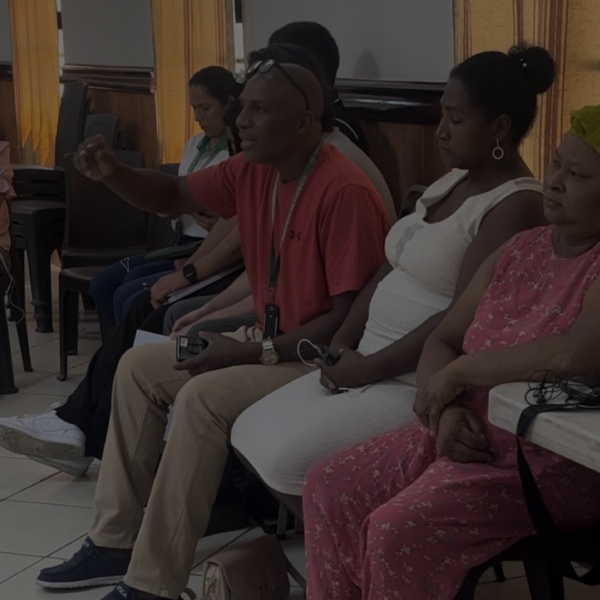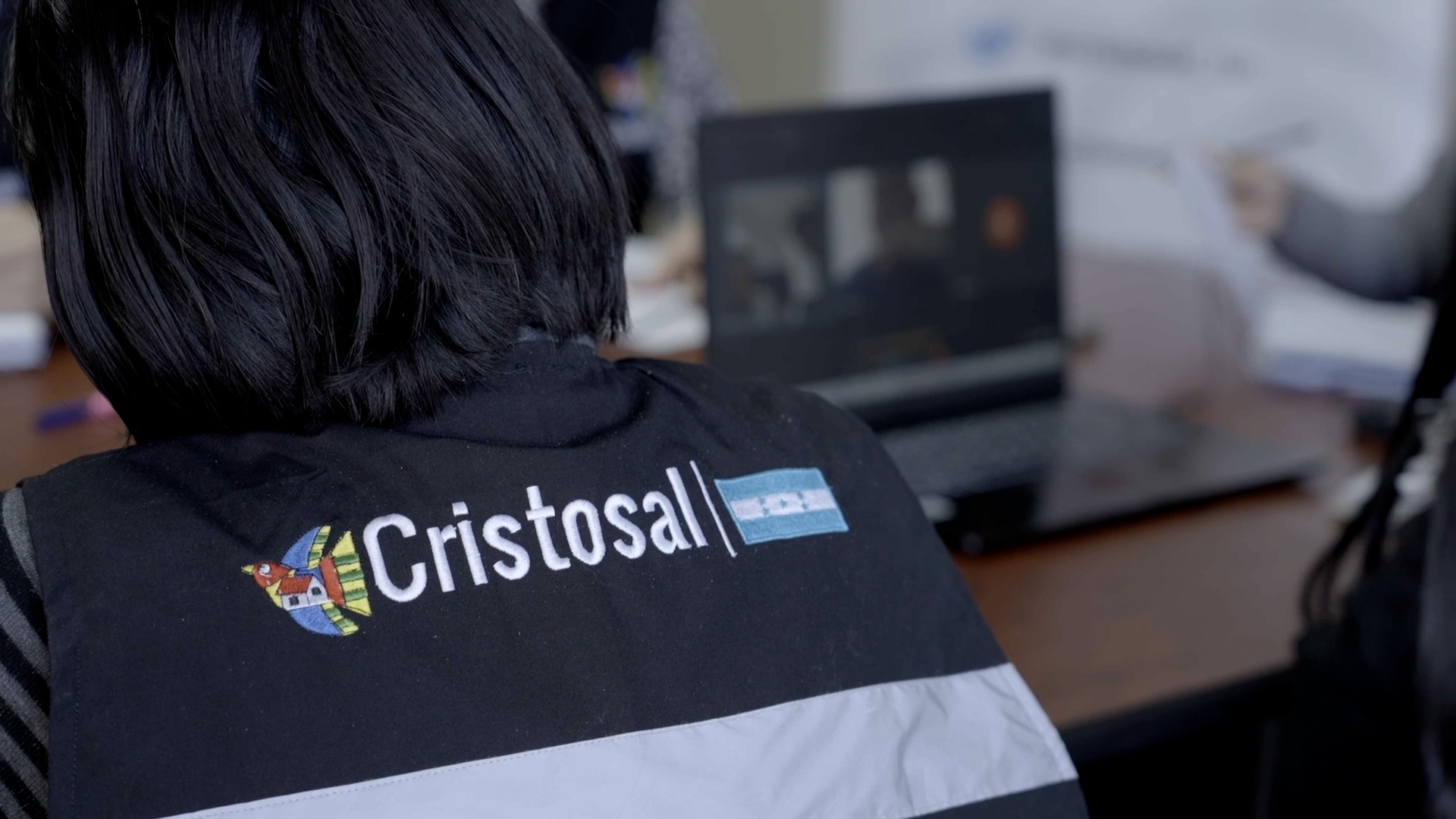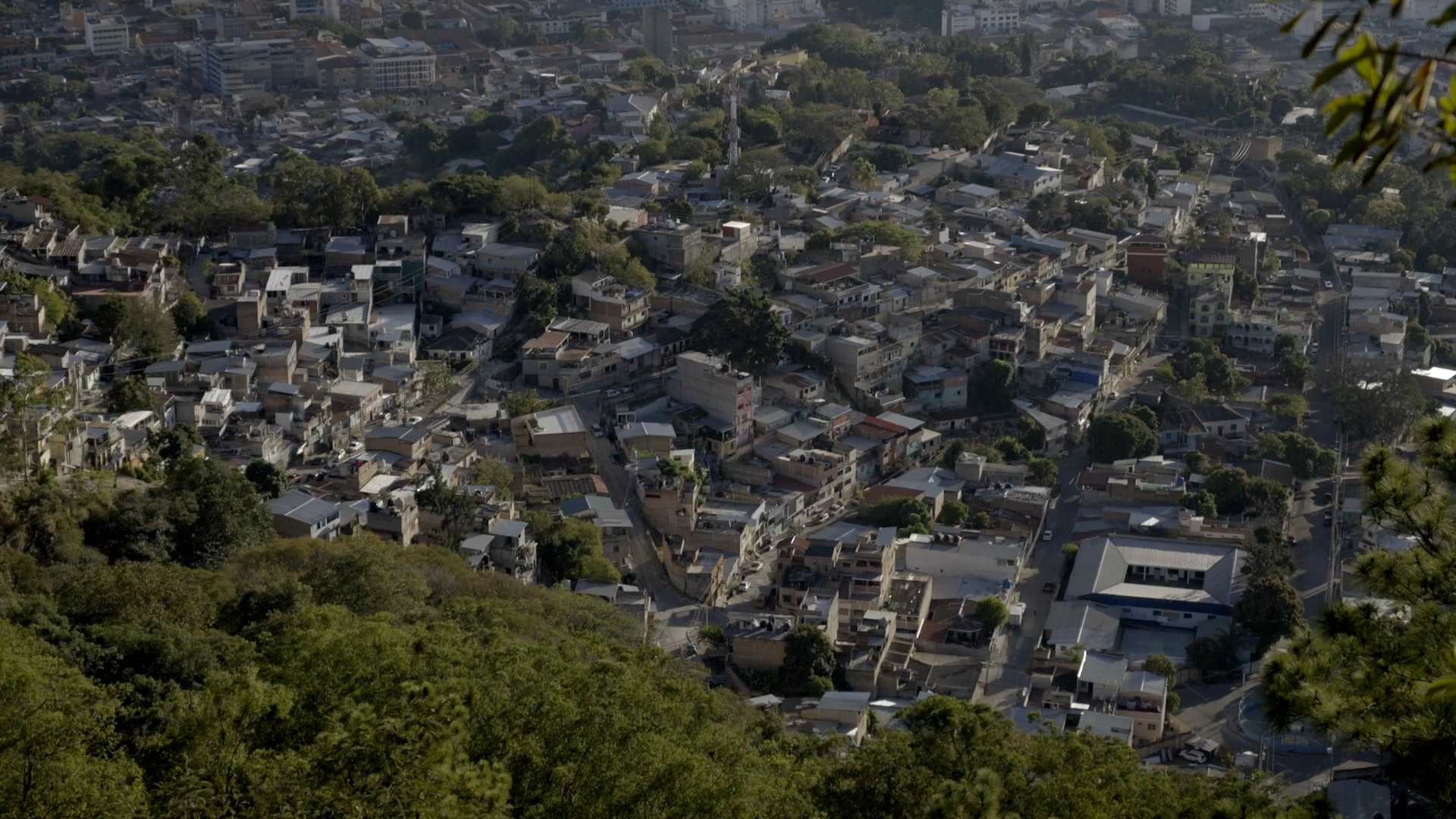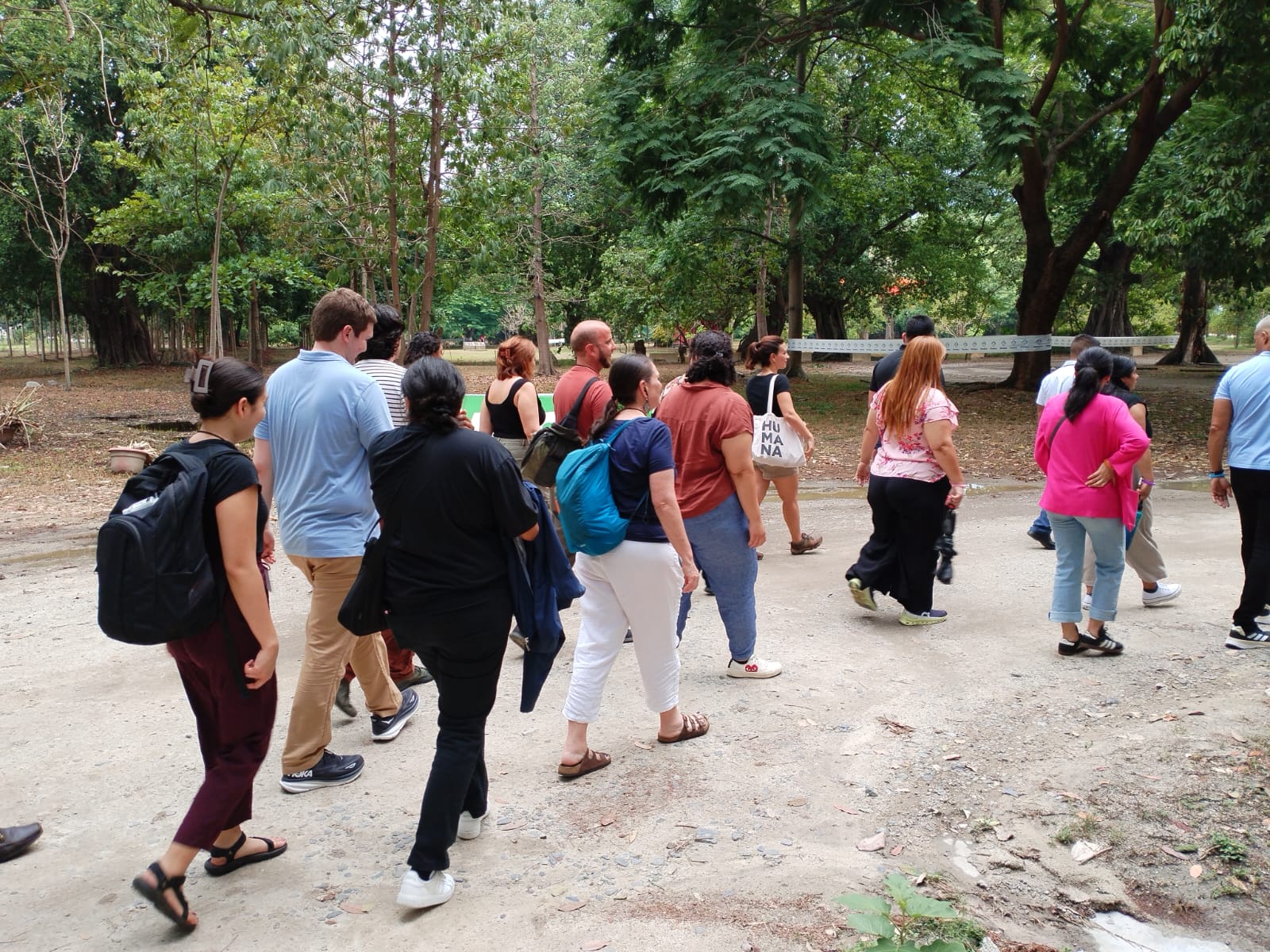
Global School Spotlights Internal Forced Displacement in Honduras


It’s another blazing hot day in Choloma, Honduras, but Claudio Castillo is used to the heat. He leaves his new home and steps out into the bright morning, making the short journey to the municipal building. He climbs the stairs and takes his place in the circle of chairs assembled in the conference room. He grabs the microphone and begins to speak.
“First, I want to start by saying that leaving [my home] was not my choice. If I had a choice, I would have stayed,” says Claudio Castillo.
Claudio is a Garifuna man who has lived most of his life in the Mosquitia of Honduras. This remote, coastal forest area in Northwest Honduras borders Nicaragua and is home to six Indigenous groups, including the Afro-Indigenous Garifuna people. While Garifuna communities have dotted the shores of Central America for centuries, Claudio laments that recently, that is changing.
He looks out over the group assembled before him and takes a moment to compose himself before continuing to recount his story.
“Our people and our culture are connected to the land,” he says “but sadly, there are a lot of other people that want that land and they will stop at nothing to take it from us.”
For Claudio’s community, the threats began several years ago when narco-traffickers started eyeing their territory to use to transport drugs from Colombia. He says that over the last ten years, he’s lost several friends and acquaintances caught in the crossfire of drug trafficking in the area.
Since the 1980s, narcos have moved their product through Northern Honduras as it travels to the United States, but in the last decade, traffickers have changed their tactics, favoring transport over land according to Insight Crime. This in turn, has caused them to take over large tracts of Miskito land, almost always by force.
“They told us if we didn’t leave, there would be consequences,” says Claudio, inhaling, “That’s when we realized we couldn’t stay.”
Under cover of night, Claudio, his family, and several other families from his community fled their homes, resettling in the city of Choloma, located in the Valle Sula region of Honduras. Now, he works with the growing number of Garifuna families resettling in the area.
Claudio joined Cristosal’s Global School in Honduras as one of the participants in our Roots of Migration seminar held in San Pedro Sula from June 8 – 13. We welcomed 18 participants from US and Honduran organizations to participate in our immersive seminar focused on understanding migration through a human rights lens.



Throughout the seminar, victims of forced displacement shared their experiences with participants.
“I think the threats started because I’m a leader in my community,” says Maria de la Cruz. “It started with notes left by the local gang members, but then they started to come to our house,” she adds, “It’s terrifying.”
Maria is a local pastor and community leader in El Progreso. She has worked extensively to support people impacted by migration in her community, including both internally displaced people and returned migrants. She joined the group as another participant in the seminar.
Having seen the impact of gang violence around her, she was not surprised when a young man showed up on her doorstep demanding money. “It’s a fairly common practice,” she says, “The problem is when they keep demanding more and more money, but my family doesn’t have any more to give.”
In El Progreso, members of civil society groups and the municipality spoke to the group, explaining their work to address internal forced displacement within and around the city. With the other Global School participants, they engaged in a dialogue to better understand this phenomenon and how it connects to migration to the US.
The Internal Displacement Monitoring Centre estimates that there are about 101,000 internally displaced persons (IDP) in Honduras as of 2023, a figure that has been exacerbated not only by violence but from natural disasters. It documented 137 displacement events in Honduras since 2008, with the highest number of displacements resulting from back-to-back hurricanes Eta and Iota in 2020. Cristosal has supported 2,946 displaced persons in Honduras between 2020 and June of 2024.
“This area, in particular, is vulnerable to natural disasters,” says Karina Andino. Karina works with Cristosal’s protection team out of the San Pedro Sula office. “During the hurricanes of 2020, entire parts of Progreso were underwater. Many people had to move,” she adds.
The International Federation of Red Cross and Red Crescent Societies reports that hurricanes displaced 927,000 people in 2020. The majority were from the Sula Valley region where the seminar was held.
“With climate change, we’re seeing a lot more extreme weather events like Eta and Iota. This is also pushing people to migrate,” says Karina.
In a presentation, Karina explained a bit about Cristosal’s work supporting IDPs on the ground in Honduras.
“We accompany victims of displacement,” Karina explains. “Each case is different, meaning [how we work with them ] doesn’t always look the same.” She laid out the methodology which begins with a critical step: the intake process to identify what rights have been violated, the victims’ immediate needs, and the initial steps toward long-term solutions.
“Our focus is on finding a durable solution,” she declares. “We don’t just want to relocate people, but ensure that they are set up to continue living and, more importantly, living with dignity.”
Reflecting on her experience, participant Anahi De Jesus said, “I came knowing I wanted to learn more about the context that my clients come from, but there has been a lot that has surprised me.” Anahi works with the organization ProBAR, supporting unaccompanied children at the US-Mexico border by connecting them to legal resources. “The biggest take- away I got from the Global School was that people are often displaced internally before migrating to the US.”
Cristosal´s education specialist, Bryan Varela, believes in the value of these intercultural exchanges and opportunities for participants to learn from each other. “Hearing direct testimonies is such a powerful learning tool,” he says.
“Actually, we’re very happy with this space that we’ve been given to talk about and let others learn about the social problems that affect us,” says Claudio, adding, “it’s important that people [from the US] understand the origin of migration. That’s why in this space, we’ve been able to explain in a detailed manner about how migration is connected to forced displacement.”
Bryan adds, “In Central America, we are people with strong family connections and are very rooted in the land where we’re from.” Bryan closes the conversation and asks, “Considering this, can migration ever be voluntary?”
